Volume 9, Issue 2
Displaying 1-13 of 13 articles from this issue
- |<
- <
- 1
- >
- >|
-
2008Volume 9Issue 2 Pages 312-315
Published: September 01, 2008
Released on J-STAGE: March 16, 2011
Download PDF (1648K) -
2008Volume 9Issue 2 Pages 316-321
Published: September 01, 2008
Released on J-STAGE: March 16, 2011
Download PDF (1649K) -
2008Volume 9Issue 2 Pages 322-326
Published: September 01, 2008
Released on J-STAGE: March 16, 2011
Download PDF (758K) -
2008Volume 9Issue 2 Pages 327-331
Published: September 01, 2008
Released on J-STAGE: March 16, 2011
Download PDF (1165K) -
2008Volume 9Issue 2 Pages 332-337
Published: September 01, 2008
Released on J-STAGE: March 16, 2011
Download PDF (1641K) -
2008Volume 9Issue 2 Pages 338-340
Published: September 01, 2008
Released on J-STAGE: March 16, 2011
Download PDF (1021K) -
2008Volume 9Issue 2 Pages 341-345
Published: September 01, 2008
Released on J-STAGE: March 16, 2011
Download PDF (1511K) -
2008Volume 9Issue 2 Pages 346-349
Published: September 01, 2008
Released on J-STAGE: March 16, 2011
Download PDF (508K) -
2008Volume 9Issue 2 Pages 350-353
Published: September 01, 2008
Released on J-STAGE: March 16, 2011
Download PDF (1298K) -
2008Volume 9Issue 2 Pages 354-358
Published: September 01, 2008
Released on J-STAGE: March 16, 2011
Download PDF (2027K) -
2008Volume 9Issue 2 Pages 359-363
Published: September 01, 2008
Released on J-STAGE: March 16, 2011
Download PDF (897K) -
2008Volume 9Issue 2 Pages 364-368
Published: September 01, 2008
Released on J-STAGE: March 16, 2011
Download PDF (878K) -
2008Volume 9Issue 2 Pages 369-372
Published: September 01, 2008
Released on J-STAGE: March 16, 2011
Download PDF (1536K)
- |<
- <
- 1
- >
- >|
